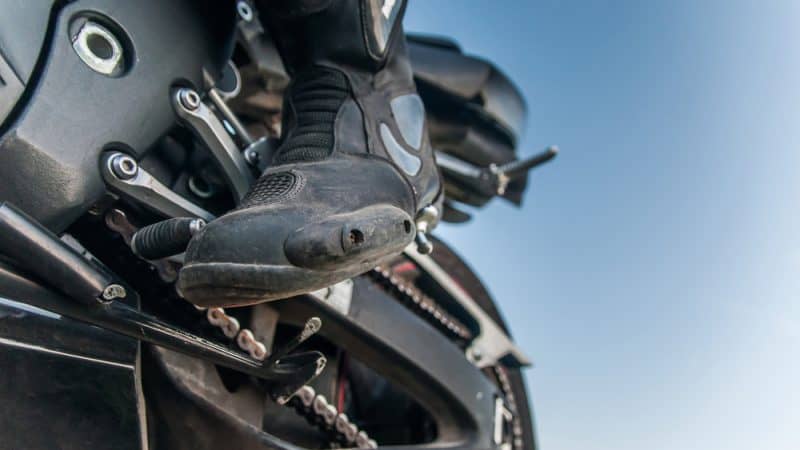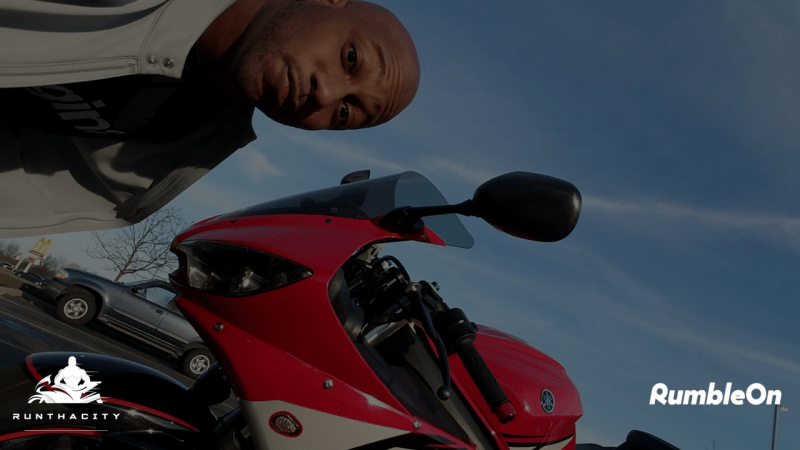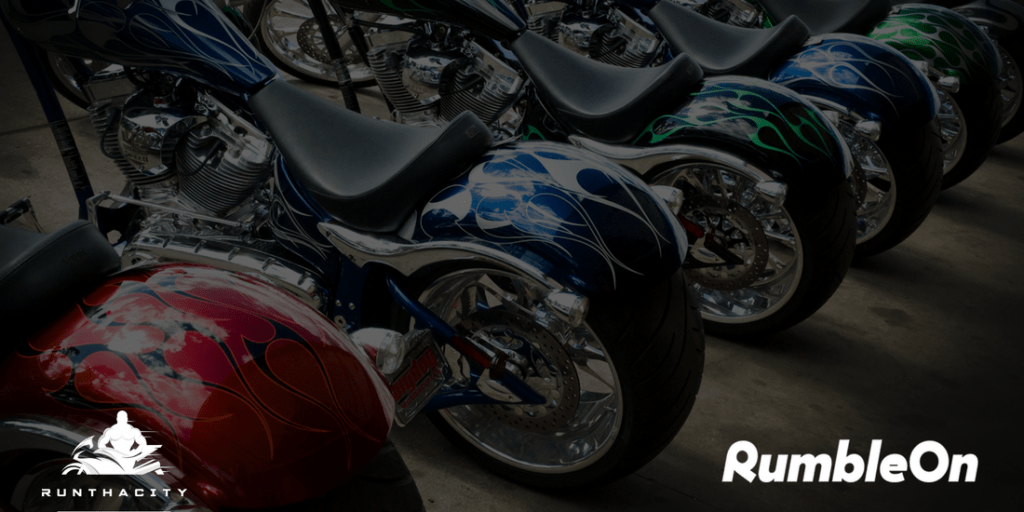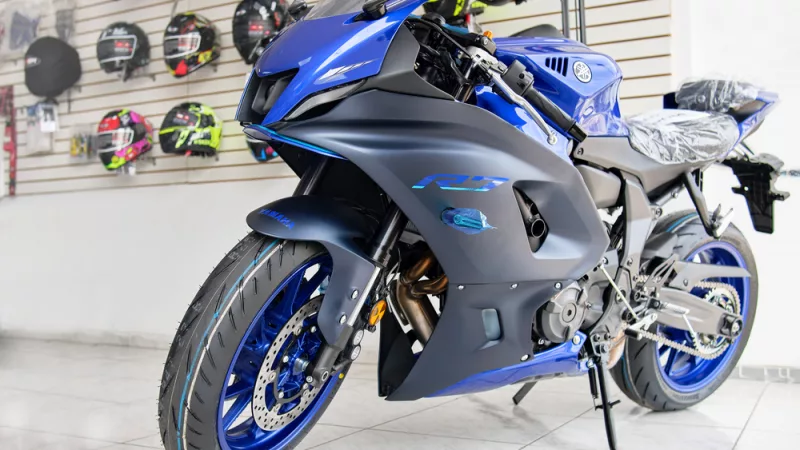If you want to gain valuable experience, then you go to school. The same applies to motorcycle riding. When you sign up for the Beginner or Basic Rider courses that are available from multiple organizations throughout the U.S., you are taking a giant step forward. Here is what to expect:
Pre-Course Assignment
The assignment that you receive is dependent on the organization that you sign up with. Make sure you do this work, because you will be better prepared for what is to come in the class. You are welcome to take notes, write down questions to ask the instructor, and familiarize yourself with the terminology.
Necessary Items
When you have class, you should bring your student handbook, a notepad, pen, and some food items for snacks and lunch. These classes will last for most of the day, so be prepared for a full day of learning and moving.
You should wear jeans with ankle boots, a long-sleeved shirt or jacket, full fingered gloves, and a DOT-legal helmet. Some schools will have helmets to borrow if you don’t have one. Keep in mind that you won’t be able to attend the class if you don’t have the appropriate gear.
Also, regardless of the weather, the class will go on. Be prepared for cold mornings. Lightweight layers are best, because you can peel them off as you get hot. You should also wear a waterproof jacket, boots, and gloves, just in case it rains.
What Happens In The Class
The class structure depends on statewide regulations and the course provider. However, most programs cover the same points. The courses are completed within two days, although you can sign up for more advanced courses later on.
First Day
On the first day of the Basic Rider Course, you don’t want to be late. Anyone who arrives late has a direct impact on how much information you receive—and you don’t want to miss anything. Before you turn on the engine, you need to sign some liability papers and other paperwork. You might be asked to introduce yourself and talk about what experience you have on a motorcycle. It’s fine if you have zero experience, because the class is designed for beginners. Relax and enjoy the chance to make new riding buddies.
The first half of the day talks about basic riding mechanics. This should be considered review if you did the pre-course assignment. If you jotted down any questions in your notes, this is the time you ask.
The first riding exercise doesn’t send you off down the road with no assistance. You review the handlebar controls once again. You mount, dismount, and turn the vehicle on and off. You then get a feel of the manually-operated clutch. Gradually, you get familiarized with the motion of the bike
The exercises thereafter include riding in a straight line, shifting gears, turning and cornering. The class is paced to allow for you to absorb this information is quickly or slowly as you need.
Second Day
The second day builds off the operations you picked up on the first day. Now, you can get more technical and polish those skills. The session begins with practice of slow speed maneuvering, emergency braking, swerving, and more cornering.
Once these drills are complete, you are assessed on your competency. The riding test will be the most stressful part of the day, because you need to successfully complete the exercises. If you don’t pass, you can retest for free; but if you fail twice, consider that riding a motorcycle might not be for you.
Other Things To Expect
There’s a reason you sign a liability form. You could tip over or crash during the hands-on section of the course. Don’t worry, though. This, too, is practice. Once you have fallen a few times, you get the hang of controlling the bike. You will receive advice for staying upright from a professional instead of having to figure it out yourself.
All in all, a Basic Rider Course is an excellent choice for all new riders who want to gain valuable experience before hitting the road. Though the course only lasts for two whole days, you learn much more than you probably expect. Go in with an open mind and leave riding your motorcycle. After that, the road is yours to master.
Enjoyed this article? Want to learn more? Check out my YouTube channel and hit that subscribe button.
You Might also like
-
Beginner’s Guide To Shifting Gears On A Motorcycle
An underrated aspect of learning how to ride a motorcycle goes beyond turning and popping wheelies. No, it’s something seemingly much more simple than that. Do you shift? Sure, shifting gears should be easy, because it’s a basic function; but shifting gear does have a layer of complexity that beginning cyclists could have problems mastering right away.
Here’s everything you need to know about shifting gears on a motorcycle.Motorcycle Gears Basics
The three basic controls are ones that you might already know—the throttle, the clutch, and the gear selector. You use the throttle to rev the engine, the clutch to engage and disengage the brakes (transmission), and to select gears. For instance, if you pull the left hand clutch towards you, the engine revs without ever moving the bike.
The gear pattern can be clicked through by using the gear selector lever and is moved by your left foot. Most bikes have the following gears, starting with the lowest first:
• First gear
• Neutral
• Second gear
• Third gear
• Fourth gear
• Fifth gear
• Sixth gear (depending on the bike)
As you can see, shifting fears is sequential. Up or down, neutral (N) is always put between 1st and 2nd gear.Technique For Motorcycle Shifting
It’s best to learn the proper technique required to maneuver through shifting gears before learning how to do anything else.
Steps of the proper shifting technique:- Disengage the clutch. Use your left hand to pull it towards you.
- Select the correct gear by using your left food on the shifting lever.
- Slightly rev the engine if shifting up.
- Gradually release the clutch. Don’t pop it.
- Feather the throttle while releasing the clutch to accelerate smoothly.
- Continue revving if you which to switch to another gear in succession. Otherwise, find a nice cruising speed to maintain.
Shifting With Sound and Feel
Have you ever heard wailing motorcycle engines on the road? You’ve probably thought to yourself, “Is that rider even shifting?” That’s you using the basic rule of sound. In basic terms, if an engine starts to scream, you shift to an upper gear. If the engine starts to grumble, then shift the engine lower.
There a many methods to help you do this properly. Beginners should only focus on the simplest method. Afterwards, you can experiment.
Start off by riding in first gear. Try to sense to point when you need to switch to second gear. This means the engine isn’t yet screaming, but you are feeling the natural inclination to gain more speed. The clutch will disengage easily.
Should the engine start to scream, this means you’ve hit the red line, otherwise known as the built-in limiter. The limiter is placed in the engine to ensure the bike doesn’t overextend itself and burn up.
If you shift a gear up too soon, the bike could stall or choke. Restart the bike. Try again. Keep working through the gears until you can hear and feel when it is time to gear up.Shifting Smoothly
You will notice that there’s no mathematical equation to figure out the “when” behind shifting. Every bike has a unique behavior that depends on how you handle it. For instance, if the bike jerks when you release the clutch, you’re being too abrupt. If the bike tends to lurch during shifts, you’re applying too much throttle. If the motorcycle’s speed dips during shifting, you need to rev the engine more between gear changes. Pay attention to the clutch, throttle, and gear selector, because these all interact and are dependent on one another.
Mechanics of Movement
Let’s back-up for a moment. Now that you have this idea in your mind that you need to listen and feel and understand with muscle memory what to do when shifting, it’s time to talk about what is happening inside the bike while you’re doing the actions.
The clutch is the first thing you touch when it’s time to shift gears, unless you have an automatic motorcycle or a quick shift. Once the clutch is engaged, meaning the lever is out and power is send to the rear tie, little springs press on the clutch plate that connect the primary drive to the part that rotates from the pistons going up and down.
When you pull the lever, the plate separates and releases the connection to the motor. In this moment, you can change gears.
That’s when you take your foot and move the gear selector. On the gear selector is a piece called a collar that has “dogs.” This dogs mesh together with the fork in the same way you interlace your fingers. When you move your foot up and down on the selector, the dogs and fork connect to help change the gear. Then, you find the right gear and accelerate.
Keep this in mind while reading the next two sections about upshifting and downshifting.Upshifting
Most of this article has been devoted to upshifting. Upshifting is easier than downshifting, because you are accelerating. This means that if you do any of the steps of shifting a little too quick, there’s less of an impact. Of course, this could result in a sudden jolt of power to the rear wheel, causing the front tire to come off the ground.
(Note: You should only practice stunts in a controlled environment and when you have gained enough experience.)Downshifting
On the opposite end of upshifting is downshifting, which tends to go a little less smoothly. If you release the clutch too quickly while downshifting, the sudden downward change can cause the gear to slow down the rear tire, compressing the front end, and causing a lack of traction in the back end. You need to be able to control the release of the clutch.
Be careful when rounding corners and decreasing your gears for this reason. You don’t want to suddenly lose traction right when you need more grip on the asphalt. That could cause the bike to skid to the side.False Neutral
When downshifting, you could accidentally hit a false neutral. This can happen anywhere there shouldn’t be a neutral, including between 3rd and 4th or 4th and 5th and so on. This could happen if the dogs don’t connect with the fork when selecting gears. There is power loss to the rear wheel.
If you end up in a false neutral, pull on the clutch, and put the bike into a higher gear. You can prevent excessive damage to the bike. Be quick and make sure you move into the correct once you get out of false neutral.
With that, you should be able to master the basics of shifting. Practice the timing of the clutch release and working with the gear selector for a bit. You will soon be able to shift between gears like someone who has been riding for many years.
Liked this article and want more beginner motorcycle tips? Check out my YouTube channel and don’t forget to hit that subscribe button. -
21 Summer Motorcycle Rallies for Summer 2018
What’s better than the open road and a summer breeze on your face? At RumbleOn, we believe that it can only be beat by joining thousands of others who live and breathe for the same experience. This summer, don’t miss your chance to join a community of riders from across the nation by checking out this list of 25 events in 2018. Make lifelong connections, show off your ride, or even buy or sell a bike of your own!
Looking for more ways to adventure? We’ve also compiled the Best Biker Bars and Food Spots, Best Sights to See, and Best Roads to Ride for you.
July Events
Monday, July 9, 2018 – Thursday, July 12, 2018
Bowling Green, KY
32nd Annual Women on Wheels International Ride-In™
Tuesday, July 10, 2018 – Thursday, July 12, 2018
Johnson City, TN
Hell’s Canyon Motorcycle Rally
Thursday, July 12, 2018 – Monday, July 16, 2018
Baker City, OR
Monday, July 16, 2018 – Friday, July 20, 2018
Provo, UT
2018 Cascade Country Rendezvous and GS Rally by BestRest
Thursday, July 19, 2018 – Sunday, July 22, 2018
Republic, WA
ABATE of Indiana’s 38th Annual Boogie 2018
Thursday, July 19, 2018 – Sunday, July 22, 2018
Springville, IN
Thursday, July 19, 2018 – Sunday, July 22, 2018
Muskegon, MI
North Dakota Ladies Run – 31st Annual
Friday, July 20, 2018 – Sunday, July 22, 2018
Dickinson, ND
South East Raider Rally – 10th Annual
Sunday, July 22, 2018 – Sunday, July 29, 2018
Maggie Valley, NC
CMA Florida Summer Springs Fling
Friday, July 27, 2018 – Sunday, July 29, 2018
Ft. McCoy, FL
GWRRA Montana District Convention 2018
Thursday, July 26, 2018 – Saturday, July 28, 2018
Missoula, MT
Friday, July 27, 2018 – Sunday, July 29, 2018
Las Vegas, NM
August Events
Thursday, August 2, 2018 – Sunday, August 5, 2018
Black River Falls, WI
Friday, August 3, 2018 – Sunday, August 12, 2018
Sturgis, SD
Apple’s 15th Annual East Coast Motorcycle Rally
Wednesday, August 8, 2018 – Sunday, August 12, 2018
Little Orleans, MD
GWRRA Kentucky Blast District Convention 2018
Thursday, August 16, 2018 – Saturday, August 18, 2018
Cave City, KY
12th Annual Surfside Beach Bash
Friday, August 17, 2018 – Sunday, August 19, 2018
Oyster Creek, TX
Winding Road Ranch Biker Party 2018
Friday, August 24, 2018 – Sunday, August 26, 2018
Rush Springs, OK
Pennsylvania Rally on the River – Summer
Thursday, August 23, 2018 – Sunday, August 26, 2018
Northumberland, PA
September Events
Thunder in the Rockies Motorcycle Rally 2018
Friday, August 31, 2018 – Monday, September 3, 2018
Loveland, CO
Friday, August 31, 2018 – Monday, September 3, 2018
Pioneer, OH
-
Why an Adjustable Motorcycle Kickstand is a Game-Changer for Riders
Motorcycles are more than just vehicles; they’re a passion, a lifestyle, and for many, an expression of personal freedom. However, every rider knows that the smallest details can make the biggest difference when it comes to convenience, safety, and enjoyment on the road. One such detail, often overlooked, is the motorcycle kickstand. Specifically, an adjustable motorcycle kickstand can transform your riding experience in ways you might not have considered. Let’s explore why upgrading to an adjustable kickstand for your motorcycle could be a game-changer.
Key Takeaways
- Adjustable Kickstands Enhance Stability: They can be modified for various terrains, ensuring your bike stays upright in different parking conditions.
- Ideal for Customized Bikes: Modifications that alter a bike’s height and balance make adjustable kickstands a necessity for maintaining stability.
- Improves Ergonomics: Adjustable kickstands can be tailored to individual rider needs, making it easier to handle the bike, especially for those with physical limitations.
- Complementary Accessories: Kickstand pads and plates further stabilize the motorcycle, especially on soft or uneven surfaces.
Comparison Table: Standard vs. Adjustable Motorcycle Kickstands
Feature Standard Kickstand Adjustable Kickstand Stability on Varied Terrain Limited Excellent Customization Not applicable High Ergonomics Standard Adjustable for ease Compatibility with Mods Low High Cost Generally lower Higher initial, but cost-effective long-term Enhanced Stability on Varied Terrain
The primary function of a kickstand is to provide stability when the motorcycle is parked. Standard, non-adjustable kickstands are designed with a one-size-fits-all approach, assuming a level parking surface. In reality, riders face a variety of parking surfaces—gravel, grass, slopes, and uneven roads. An adjustable kickstand allows for length modifications, ensuring your bike remains upright and stable, regardless of ground conditions. This adaptability is not just about convenience; it’s a safety feature that prevents your motorcycle from tipping over and sustaining damage.
Customization for Custom and Modified Bikes
Customization is at the heart of motorcycle culture. Riders spend considerable time and resources modifying their bikes to reflect their personal style and to improve performance. These modifications can alter the bike’s original balance and height, making the original kickstand less effective or even unusable. Custom kickstands for motorcycles offer a solution, but an adjustable kickstand provides a versatile and often more economical alternative, accommodating changes in bike height and balance without the need for multiple replacements.
Improved Ergonomics and Accessibility
For shorter riders or those with limited physical strength, maneuvering a motorcycle on its kickstand can sometimes be challenging. An adjustable kickstand can be set to a height that reduces the effort required to lift the bike off the stand. This improved ergonomics makes riding more accessible and enjoyable for everyone, ensuring that the focus remains on the joy of the ride, not the struggle of parking.
Motorcycle Kickstand Pads and Plates: The Perfect Companions
While an adjustable kickstand offers improved stability and customization, pairing it with a motorcycle kickstand pad or plate can enhance its functionality even further. Kickstand pads distribute the motorcycle’s weight over a larger area, making them ideal for soft ground where a stand might otherwise sink. Similarly, motorcycle kickstand plates offer a stable platform on uneven surfaces, preventing the stand from slipping. Together, these accessories complement the adjustable kickstand, providing a comprehensive solution to parking challenges.
FAQs: Adjustable Motorcycle Kickstands
-
What makes an adjustable kickstand better than a standard one?
- An adjustable kickstand can be altered in length to suit various terrains and bike modifications, offering superior stability and customization.
-
Can I install an adjustable kickstand on any motorcycle?
- Yes, most adjustable kickstands are designed to fit a wide range of motorcycles, but it’s essential to check compatibility with your specific model.
-
Will an adjustable kickstand affect my bike’s balance?
- It will improve balance by allowing adjustments to accommodate different ground levels and modifications that may affect your bike’s original balance.
-
How do I know if my adjustable kickstand is at the right height?
- The bike should sit at a stable angle without leaning too much to one side. Adjust the kickstand until you find a stable and secure position.
-
Are kickstand pads and plates necessary?
- While not strictly necessary, they are highly recommended for additional stability, especially on soft or uneven surfaces.
-
Can adjusting my kickstand void my motorcycle’s warranty?
- Generally, no. However, it’s best to consult your warranty terms or manufacturer to be sure.
Conclusion: A Simple Upgrade with Significant Benefits
An adjustable kickstand for motorcycles represents a simple upgrade with a profound impact on your riding experience. It offers enhanced stability, customization, and ergonomics, making it a wise investment for riders of all styles and preferences. When combined with kickstand pads and plates, it provides a foolproof solution to virtually any parking challenge. Whether you’re a casual rider or a motorcycle enthusiast, consider the adjustable kickstand as your next game-changing accessory. It’s a small detail that promises to make a big difference, ensuring your focus remains on the freedom and joy of riding.












2 comments on What to Expect at a Beginner Rider Course